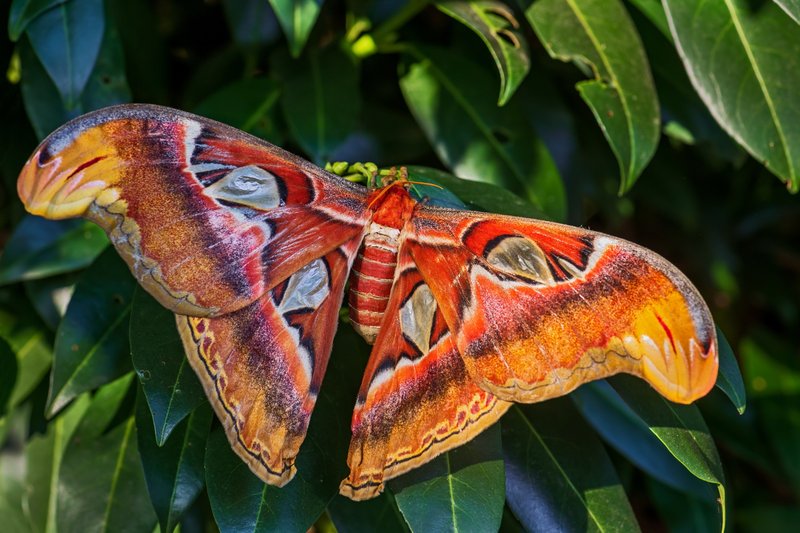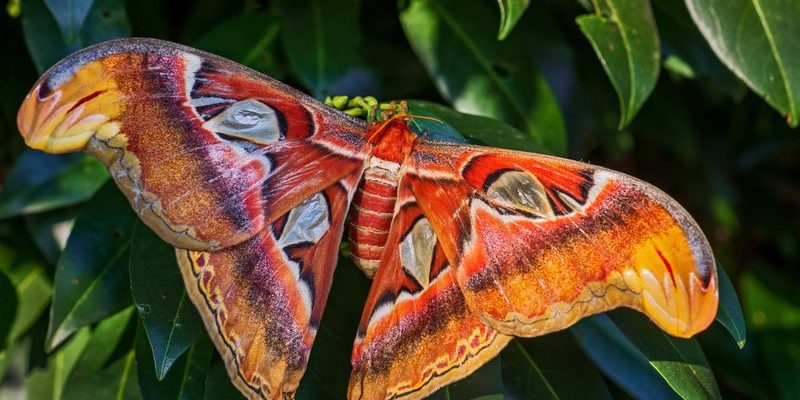
Let’s dive into the common myths about the Atlas moth and clear the air. Picture this: You’re sitting with a friend, sipping coffee, and they tell you some wild stories about moths. Some of them might be based on facts, but others? Well, they might need a bit of debunking. So, let’s untangle the truth from fiction and explore what really makes the Atlas moth so unique.
Myth 1: Atlas Moths Are Dangerous to Humans
You might have heard that some giant insects can be harmful, which could lead you to believe that the Atlas moth is a threat. Here’s the thing—Atlas moths are not dangerous to humans at all. In fact, they’re quite harmless! Unlike bees or wasps, they don’t sting, and they don’t bite either.
Atlas moths spend most of their lives in a larval stage, feeding on plants such as guava and citrus. They don’t have any venom or aggressive behavior. Their primary goal is to find a mate and reproduce. So, if you spot one fluttering around, instead of panicking, think of it as a beautiful creature just passing by.
Myth 2: All Moths Are Nocturnal
Another common belief is that all moths are nocturnal, meaning they only come out at night. While many moths do prefer the dark, the Atlas moth is an exception to this rule. Let me explain: while they primarily fly during dusk and dawn—times known as crepuscular—these majestic beings can sometimes be spotted during the day, especially when they’re resting.
Think of it like this: just because a lot of people prefer to go to the movies at night doesn’t mean there aren’t daytime showings. In the grand world of insects, the Atlas moth has quite the flexible schedule!
Myth 3: Atlas Moths Are Attracted to Light Like Other Moths
You’ve probably noticed that many moths are drawn to lights, which is a behavior that stems from their natural instincts. But guess what? The Atlas moth isn’t as interested in lights as its smaller cousins. Here’s why: their large size and unique wing coloration make them less reliant on bright lights for navigation.
Instead, they use their keen sense of smell to find food and mates. This means that if you leave a porch light on, don’t be surprised if you see another type of moth and not the Atlas moth. It’s almost like they’re playing hard to get!
Myth 4: The Atlas Moth Lives a Very Long Time
It’s easy to assume that larger creatures live longer lives, but with the Atlas moth, that’s not the case. In fact, the lifespan of an adult Atlas moth is only about two weeks! After emerging from its cocoon, the moth has a short window of time to mate and lay eggs before it starts to deteriorate. Can you imagine living your entire life in just two weeks?
This short life cycle is quite common among moths, but it adds a layer of urgency to their existence. They’re all about that love life!
Myth 5: Atlas Moths Can’t Fly Well
You might think that, given their enormous wings, Atlas moths would struggle to stay airborne. Surprisingly, they’re actually quite skilled flyers! Although they are the largest moths in the world, they can maneuver through their environment effectively.
Imagine taking a giant kite out into the wind; while it may seem difficult at first, with the right technique, you can get it soaring high. Atlas moths use their broad wings to glide gracefully and are capable of flying considerable distances in search of mates and food.
Myth 6: The Atlas Moth Doesn’t Have a Purpose
Some people may look at the Atlas moth and see it only as a curious oddity. However, the reality is that every species, including the Atlas moth, plays a role in its ecosystem. They not only help in the pollination of certain plants but also serve as a food source for various animals.
Think of them as part of the intricate web of life. Just like every character in a story has a purpose, the Atlas moth contributes to the greater narrative of its ecosystem. So, when you appreciate this moth, you’re recognizing its role in nature’s dance.
Myth 7: Atlas Moths Are Rare
You might be surprised to learn that Atlas moths are not as rare as you may think. They can be found in various tropical and subtropical regions, especially throughout Southeast Asia. While they might not be fluttering around your backyard, they are quite common in their natural habitats.
What’s more, Atlas moths are often seen during specific seasons, so if you happen to take a trip to their habitats, you may just catch a glimpse of these giant beauties in action!
Embracing the Truth About Atlas Moths
So, there you have it. The Atlas moth is a fascinating creature filled with myths just waiting to be debunked. From their harmless nature to their short lifespans, understanding the facts helps us appreciate these giants of the moth world even more.
Next time you hear a story about the Atlas moth, you can confidently share the truth. Remember, these moths are not just big; they’re also a beautiful part of our planet’s diverse tapestry. So, keep your eyes peeled, because who knows? You might just catch sight of one in the wild!

